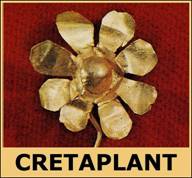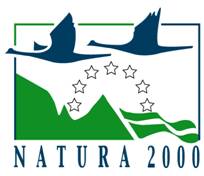
Bupleurum kakiskalae
- The plant Bupleurum kakiskalae
grows on limestone cliffs at Linoseli (Kakiskala), along the
steep slopes of the mountain cliffs of Lefka Ori in Western
Crete, and nowhere else in the world.
- It was first described in 1967 by the Swiss botanist Werner Greuter.
- It is a perennial species, lives up to 12 years and, during most
of its life time, produces only leaves. During the last year of
its life, it flowers, produces fruits and then, it dies.
- It flowers between July and August and the fertile stems are up
to 1m high. Its flowers are small and yellow. The fruits mature
between October and November and during December, they start to
germinate. At that time, many seedlings appear but only few of
these will survive, due to overgrazing and to competition with
other plant species.
- It is protected by the Greek Presidential Decree 67/81 and the
Bern Convention, and is included in the Annexes II* and IV of the
Habitats Directive. It is considered as one of the Top 50 most
threatened Mediterranean island plants according to IUCN (The
World Conservation Union). It is an endangered species according
to the Red Data Book of Rare and Threatened Plants of Greece,
because its unique and limited population is vulnerable to all
types of threats (e.g. climatic changes).
- To date, it is not yet known whether the plant has pharmaceutical
properties as do other related plant species and thus has not
been utilised by man.
- In the framework of the CRETAPLANT project, the Micro-reserve of
the plant has been set up in an area of 1 hectare at the locality
of Linoseli where its unique population is confined.





